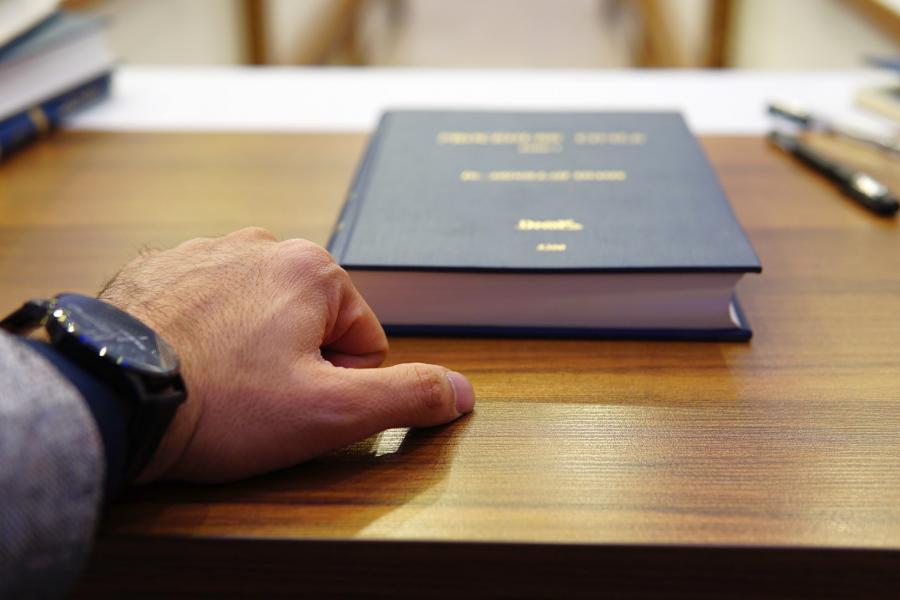Calculating Your Damages After a Car Collision
Every car crash situation is different, and the injuries and damages sustained are unique to each individual. As a result, calculating your damages after a car accident in Pennsylvania is complicated and requires consideration of numerous factors. For you to get the settlement you deserve, it pays to consult with an experienced personal injury attorney who understands the system, as well as the tactics insurance companies use to get you to accept the lowest settlement possible.
Cliff Rieders wrote the book on the financial responsibility law in Pennsylvania. The financial responsibility law governs auto collisions in Pennsylvania, which involves first-party benefits, property damage, peer review of medical care, limited and full tort, under and uninsured motorist coverage, and many other factors.
What Does Compensation Cover?
In Pennsylvania, damage compensation falls into two categories: economic damages and non-economic damages.
- Economic damages – expenses which can be objectively calculated, such as property damage; medical and hospital bills, including future bills; therapy and rehabilitation costs; costs of equipment, such as wheelchairs; loss of income and future wage horizon; property damage; and funeral and burial costs, if death is involved.
- Non-economic damages – costs which are more subjective, including the loss of life’s pleasures; physical damages that include physical pain and suffering, scarring, disfigurement, and permanent disability; the loss of a marital relationship (consortium); emotional damages, such as stress, anxiety, and mental anguish; loss of life’s pleasures until the time of death.
Calculating Damages
Economic damages are relatively easy to calculate, since they can be measured in actual monetary figures and often have tangible evidence such as bills and receipts.
It is much more difficult to calculate non-economic damages, as each person will experience their injuries differently. Some insurance companies calculate damages by totaling economic damages and then assigning a “multiplier” (usually between 1.5 and 5) to the case, based on the severity of the accident or injury. Other insurance companies utilize various computer programs.
If a case goes to a jury, some factors used to calculate a dollar figure for non-economic damages include:
- The type, extent, and severity of injuries
- The interruption to daily life and activities
- Whether you will be able to return to work and at what level
- The effect on your marriage, family life and social interactions
- The emotional trauma suffered, including stress, anguish, grief, pain, and anxiety
- The length of time it takes to recover and whether multiple surgeries or difficult rehabilitation will be required
- The degree of permanent injury, including scarring and disfigurement
- Your doctor’s professional opinion and assessment of your injuries.
Pennsylvania Car Accident Laws
The following are laws that affect vehicle crash damage settlements in Pennsylvania:
- Limited versus full tort -- Pennsylvania has a “choice” car insurance system. If you choose “limited tort” car insurance when you purchase your plan, you typically need to file a claim under your own personal injury coverage for compensation for medical bills and other financial losses, regardless of who was at fault and caused the crash. However, if the crash resulted in "serious injury” and you are able to go beyond the no-fault limitation or if you have chosen “full tort” coverage, you can seek compensation against an at-fault driver. Whether the forms have been properly executed and therefore apply can be a complicated question. We always look at the underwriting file to see if the forms have been properly signed and executed.
- Comparative fault -- Pennsylvania has a “modified comparative fault” rule. This means your total damages award is reduced by whatever percentage of the fault of the accident the courts determine is yours, in those cases where there is a right to sue. If you are found to be more than 50% at fault, you would receive no This rule binds Pennsylvania judges and juries, and it will also guide insurance companies evaluating your case.
- Statute of limitations – This is the deadline by which you must file a car crash lawsuit. In Pennsylvania, the statute is two yearsafter the accident for filing a personal injury or property damage lawsuit. If you miss the two-year lawsuit filing deadline, the court may throw out your case. For an injury case, the date the clock starts running is the date of the accident. If a death is involved, this is figured from the date the victim died. Pennsylvania has a tolling rule which applies in some unique circumstances. There is also a Minors Tolling Act in Pennsylvania. Statute of limitations is one of the more arcane areas of law and the specific factual scenario is very important.
Get Help From an Experienced Attorney
Calculating damages after a car accident is complicated, and insurance companies will always try to get you the lowest settlement possible, so it makes sense to consult an experienced Pennsylvania auto crash attorney before you talk to an insurance company in order to protect your rights.
Your attorney knows how to present the best argument as to why you should receive the damages you seek, whether negotiating with insurance companies or going to trial. The goal is to recover the maximum possible compensation on your behalf.
More to Read:
Previous Posts:






